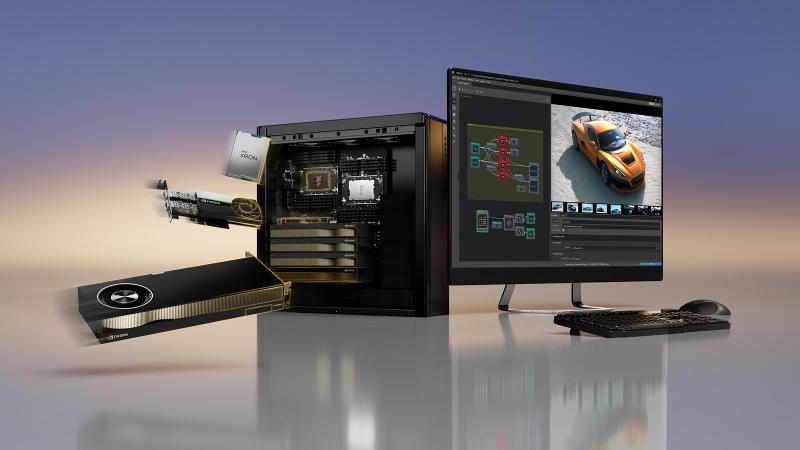Nvidia distinguishes itself from mobile workstation NPUs by emphasising scalable AI performance.
Nvidia has expanded its range of Ada Lovelace pro laptop GPUs to include new entry-level variants. Ada-generation Nvidia RTX 500 and 1000 graphics cards will soon be offered by Dell, HP, Lenovo, and MSI in incredibly portable mobile workstations. The Nvidia RTX 2000, 3000, 3500, 4000, and 5000 Ada Generation laptop GPUs that were introduced last year will be joined by these.
The Ampere-based RTX A500 and A1000 will be replaced by the Nvidia RTX 500 and 1000 Ada. Single precision floating-point performance (TFLOPS) has improved significantly generation over generation on paper, while part of this may be due to the new GPUs’ larger TGPs (total graphics power). The fourth generation of Tensor cores has enabled a significantly greater improvement in AI performance.
The messaging from Nvidia regarding the new chips centres on AI. The business notes that next-generation mobile workstations with Ada Generation GPUs will have an Nvidia RTX GPU, which has Tensor Cores for AI processing, in addition to a neural processing unit (NPU), which is a part of the CPU [like Intel Core Ultra]. The NPU assists in offloading light AI activities, according to the business, while the GPU offers additional AI performance for daily AI workflows that are more demanding.
Nvidia asserts that a greater degree of AI acceleration provided by the GPU is necessary to handle a variety of AI-based tasks, including generative AI and content creation, streaming videos with AI upscaling, and video conferencing with superior AI effects.
The business claims that the new Nvidia RTX 500 GPU offers up to 10x graphics performance for 3D rendering, up to 3x faster AI photo editing, and up to 14x generative AI performance for models like Stable Diffusion when compared to a CPU-only setup.
The market for budget-friendly mobile workstations is exciting right now. AMD and (soon) Intel, who are releasing CPUs with progressively potent integrated GPUs that can provide decent performance for mainstream 3D CAD, are posing a greater threat to Nvidia. This implies that in some operations, a discrete Nvidia GPU may not be as necessary, potentially saving money and electricity.
For instance, the AMD Ryzen Pro 7000 Series, which powers the Lenovo ThinkPad P14s and HP ZBook Firefly G10 A, may perform well in CAD/BIM applications like Solidworks and Revit. We anticipate that future Arc Pro-equipped Intel Core Ultra laptop processors will provide a comparable value proposition for a single processor.
Naturally, Nvidia can increase performance with a discrete GPU—and not just for hardware ray tracing or core 3D graphics. Tensor Cores from Nvidia can greatly improve AI processing. Currently, the majority of the advantages for AEC companies are either generic (e.g., backdrop blur or text-to-image functionality during video chats) or concentrate on photo editing or visualisation. AI de-noising and Nvidia DLSS 3, which produce more high-quality frames and improve 3D performance, are two examples of popular viz tools.
Applications are expected to increase as more AEC software companies adopt AI; however, with the growing popularity of browser-based BIM tools and data centralization, a large portion of this processing may be performed by GPUs on servers or the cloud.















